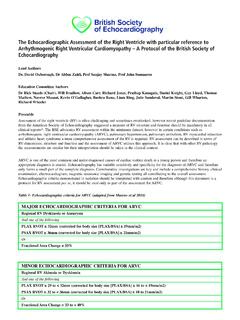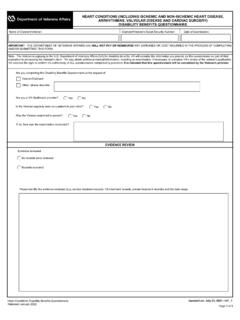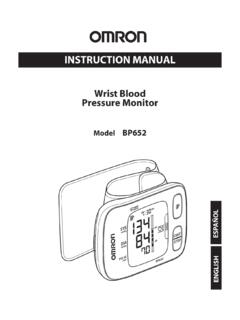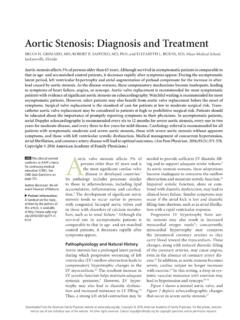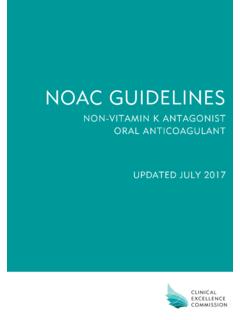Transcription of Basic Cardiac Rhythms Identification and Response
1 Basic Cardiac Rhythms . Identification and Response Module 1. ANATOMY, PHYSIOLOGY, &. ELECTRICAL CONDUCTION. Objectives Describe the normal Cardiac anatomy and physiology and normal electrical conduction through the heart. Identify and relate waveforms to the Cardiac cycle. Cardiac Anatomy 2 upper chambers Right and left atria 2 lower chambers Right and left ventricle 2 Atrioventricular valves (Mitral &. Tricuspid). Open with ventricular diastole Close with ventricular systole 2 Semilunar Valves (Aortic & Pulmonic). Open with ventricular systole Open with ventricular diastole The Cardiovascular System Pulmonary Circulation Unoxygenated right side of the heart Systemic Circulation Oxygenated left side of the heart Anatomy Coronary Arteries How The Heart Works Anatomy Coronary Arteries 2 major vessels of the coronary circulation Left main coronary artery Left anterior descending and circumflex branches Right main coronary artery The left and right coronary arteries originate at the base of the aorta from openings called the coronary ostia behind the aortic valve leaflets.
2 Physiology Blood Flow Unoxygenated blood flows from inferior and superior vena cava Right Atrium Tricuspid Valve Right Ventricle Pulmonic Valve Lungs Through Pulmonary system Physiology Blood Flow Oxygenated blood flows from the pulmonary veins Left Atrium Mitral Valve Left Ventricle Aortic Valve Systemic Circulation Blood Flow Through The Heart Cardiology Rap Physiology Cardiac cycle Represents the actual time sequence between ventricular contraction and ventricular relaxation Systole Simultaneous contraction of the ventricles Diastole Synonymous with ventricular relaxation When ventricles fill passively from the atria to 70% of blood capacity Physiology Heart rate (HR). Number of contractions (beats per minute). Normal heart rate is 60 100 beats per minute (bpm). Stroke volume (SV). Volume of blood being pumped out of ventricles in a single beat or contraction Normal stroke volume is 60 130 mL. Physiology Cardiac output (CO). Amount of blood pumped by the left ventricle in one minute Normal Cardiac output is 4 8 L/min Cardiac Output =.
3 Stroke Volume x Heart Rate **Our Swan boxes give us a continuous Cardiac output reading! Physiology Pre-load Volume and stretch of the ventricular myocardium at the end of diastole After-load Amount of pressure against which the left ventricle must work during systole to open the aortic valve Clinically measure by systolic blood pressure Normal Electrical Conduction System SA node Inter-nodal pathways AV node Bundle of his Left & Right bundle branches Purkinje fibers The SA Node and the AV Node Electrical Conduction System EKG Waveforms One complete Cardiac cycle =. P, Q, R, S, (QRS complex), and T wave Electrical Conduction System EKG Waveforms P wave Atrial depolarization (contraction). QRS Complex ventricular depolarization, atrial repolarization T wave ventricular repolarization (resting phase). Module 2. INTERPRETING EKG. RHYTHM STRIPS. Objectives Utilize a systematic process when approaching the interpretation of the EKG. Identify normal and abnormal components on the EKG.
4 EASI Lead Lead Placement Color Code E Brown: Lower sternum (5th intercostal space). A Red: Left mid-axillary line (5th intercostal space). S Black: Upper sternum (just below sternal angle). I White: Right mid-axillary line (5th intercostal space). Green: Anywhere Electrical Conduction Systems EKG Waveforms Reading EKG Graph Paper Graph paper allows a visual measurement of: Time (rate). Measured on the horizontal line Amplitude (voltage). Measured on the vertical line Reading EKG Graph Paper Paper divided into small squares: Width = 1 millimeter (mm). Time interval = seconds 1 small square = seconds Reading EKG Graph Paper Darker lines divide paper into every 5th square vertically and horizontally: Large squares measure 5 mm in height and width Represents time interval of seconds 25 small squares in each large square 1 large square = seconds Interpreting EKG Rhythm Strips First and most important ASSESS YOUR PATIENT!! Read every strip from left to right, starting at the beginning of the strip Apply the five-step systematic approach that you will learn in this module for consistency with each strip that you interpret Interpreting EKG Rhythm Strips The Five Step Approach The five-step approach, in order of application, includes analysis of the following: 1.
5 Heart rate 2. Heart rhythm 3. P wave 4. PR interval 5. QRS complex Interpreting EKG Rhythm Strips Step 1 Heart Rate Count the number of electrical impulses as represented by PQRST. complexes conducted through the myocardium in 60 seconds (1 minute). Atrial rate: Count the number of P waves ventricular rate: Count the number of QRS complexes Interpreting EKG Rhythm Strips Step 1 Heart Rate Methods to determine heart rate The 6 second method Denotes a 6 second interval on EKG strip Strip is marked by 3 or 6 second tick marks on the top or bottom of the graph paper Count the number of QRS complexes occurring within the 6 second interval, and then multiply that number by 10. Using rate determination chart More accurate calculation of HR. Preferred method Must use this method for the test!! Interpreting EKG Rhythm Strips Step 1 Heart Rate 6 second method Interpreting EKG Rhythm Strips Step 1 Heart Rate Using rate determination chart Count spaces between R to R. Find number of spaces on the chart to determine the rate Interpreting EKG Rhythm Strips Step 1 Heart Rate Example: 1.
6 Find an R to R 2. Count the small boxes between the R's = 15 3. On the chart find 15 spaces = 100bpm Interpreting EKG Rhythm Strips Step 2 Rhythm Rhythm A sequential beating of the heart as a result of the generation of electrical impulses Classified as: Regular pattern: Interval between the R waves is regular Irregular pattern: Interval between the R waves is not regular Interpreting EKG Rhythm Strips Step 2 Rhythm Measuring a Regular Rhythm Measure the intervals between R waves (measure from R to R). If the intervals vary by less than seconds or small boxes, the rhythm is considered to be regular Interpreting EKG Rhythm Strips Step 2 Rhythm Measuring an Irregular Rhythm If the intervals between the R waves (from R to R) are variable by greater than seconds or small boxes, the rhythm is considered to be irregular Interpreting EKG Rhythm Strips Step 3 P Wave P wave is produced when the left and right atria depolarize First deviation from the isoelectric line Should be rounded and upright P wave is the SA node pacing or firing at regular intervals This pattern is referred to as a sinus rhythm Interpreting EKG Rhythm Strips Step 3 P Wave P wave: 5 questions to ask 1.
7 Are P waves present? 2. Are P waves occurring regularly? 3. Is there one P wave present for every QRS complex present? 4. Are the P waves smooth, rounded, and upright in appearance, or are they inverted? 5. Do all P waves look similar? Interpreting EKG Rhythm Strips Step 4 PR Interval Measures the time interval from the onset of atrial contraction to onset of ventricular contraction Measured from onset of P wave to the onset of the QRS complex Normal interval is seconds (3-5 small squares). Measuring PR Interval: Red lines indicate where calipers would be placed to measure PR interval Interpreting EKG Rhythm Strips Step 4 PR Interval PR interval: 3 questions to ask 1. Are the PR intervals greater than seconds? 2. Are the PR intervals less than seconds? 3. Are the PR intervals consistent across the EKG strip? Interpreting EKG Rhythm Strips Step 5 QRS Complex The QRS complex presents depolarization or contraction of the ventricles Q wave First negative or downward deflection of this large complex R wave First upward or positive deflection following the P wave (tallest waveform).
8 S wave The sharp, negative or downward deflection that follows the R wave Normal interval is seconds (1 to 3 small boxes). Measuring QRS complex: Red lines indicate where calipers should be placed to measure QRS. Interpreting EKG Rhythm Strips Step 5 QRS Complex QRS complex: 3 questions to ask 1. Are the QRS complexes greater than seconds (in width)? 2. Are the QRS complexes less than seconds (in width)? 3. Are the QRS complexes similar in appearance across the EKG strip? Interpreting EKG Rhythm Strips Practice Strip 1. HR = # of boxes between R's = 19 spaces = 79bpm 2. Rhythm = regular or irregular = regular (R-R's are equal). 3. P waves = P wave for every QRS? = yes 4. PR interval = measure from beginning of P to beginning of QRS = 5. QRS = measure from start of Q to end of S = Interpreting EKG Rhythm Strips T Wave Produced by ventricular repolarization or relaxation Commonly seen as the first upward or positive deflection following the QRS. complex Interpreting EKG Rhythm Strips U Wave Usually not visible on EKG strips If visible, typically follows the T wave Appears much smaller than T wave, rounded, upright, or positive deflection is they are present Cause or origin not completely understood May indicate hypokalemia Interpreting EKG Rhythm Strips Artifact EKG waveforms from sources outside the heart Interference is seen on the monitor or EKG strip 4 causes Patient movement (most common).
9 Loose or defective electrodes (fuzzy baseline). Improper grounding (60 cycle interference). Faulty EKG apparatus Module 3. SINUS Rhythms . Objectives Recognize sinus dysrhythmias on EKG and relate cause, significance, symptoms, and treatment. Sinus Rhythms Rhythms that originate in the sinoatrial node (SA node). 5 Common Variations of a sinus rhythm: Normal sinus rhythm (60 100 bpm). Sinus bradycardia (< 60 bpm). Sinus tachycardia ( >100 bpm). Sinus arrhythmia (60 100 bpm). Sinus pause/arrest Normal Sinus Rhythm Sinus rhythm is the normal regular rhythm of the heart set by the natural pacemaker of the heart called the sinoatrial node. It is located in the wall of the right atrium. Normal Cardiac impulses start there and are transmitted to the atria and down to the ventricles. 5 Steps to Identify Normal Sinus Rhythm 1. What is the rate? 60-100 beats per minute 2. What is the rhythm? Atrial rhythm regular ventricular rhythm regular 3. Is there a P wave before each QRS? Yes Are P waves upright and uniform?
10 Yes 4. What is the length of the PR interval? seconds (3-5 small squares). 5. Do all QRS complexes look alike? Yes What is the length of the QRS complexes? seconds (1 to 3 small squares). Normal Sinus Rhythm Nursing Interventions No interventions required!! Monitor patient if ordered by physician. Sinus Bradycardia Sinus bradycardia is a regular but unusually slow heart beat (less than 60 bpm). Sinus bradycardia is often seen as a normal variation in athletes, during sleep, or in Response to a vagal maneuver. 5 Steps to Identify Sinus Bradycardia Rhythm 1. What is the rate? Less than 60 beats per minute 2. What is the rhythm? Atrial rhythm regular ventricular rhythm regular 3. Is there a P wave before each QRS? Yes Are P waves upright and uniform? Yes 4. What is the length of the PR interval? seconds (3-5 small squares). 5. Do all QRS complexes look alike? Yes What is the length of the QRS complexes? seconds (1 to 3 small squares). Causes and S/S of Sinus Bradycardia Causes Signs and Symptoms Hypoglycemia Syncope Hypothermia Dizziness Hypothyroidism Chest Pain Previous Cardiac history Shortness of Breath Medications Exercise Intolerance Toxic exposure Cool, clammy skin MI Inferior wall involving right coronary artery Risk and Medical Tx of Sinus Bradycardia Risk Medical Treatment Reduced Cardiac Output Atropine Pacing if the patient is hemodynamically compromised Treatment will be based on whether patient is symptomatic Sinus Bradycardia Nursing Interventions Assess patient Are they symptomatic?
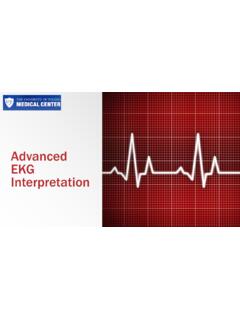
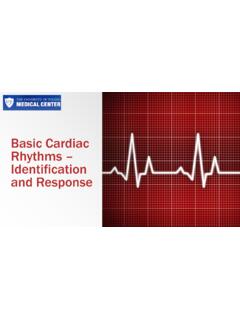
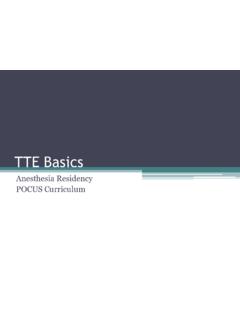
![Heart Failure Pathophysiology.ppt [Read-Only]](/cache/preview/5/6/a/8/a/5/4/1/thumb-56a8a5411198557184679ccfbe445eec.jpg)
